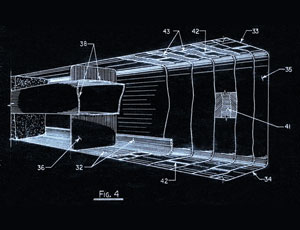The romantic myth of the American inventor doesn’t have much substance. A colleague used the term to describe Award of Excellence Winner John Hillman, but there is very little romance in the process of creating an invention for profit. Large amounts of perspiration and legal entanglement are more typical. Hillman’s story involved, as our cover story notes, “endless sketches, headaches and hope,” and he is a good example of what it takes to produce such an invention. His story could serve as a template for others who fear construction has forgotten how to innovate.

You won’t find a campus-like environment at too many companies, but Chicago-based Teng & Associates strikes us as an employer that supported rather than hindered Hillman’s work on his Hybrid Composite Beam project. Supportive environments are vital for creativity. When people can express opinions, pursue outside passions, work autonomously and feel appreciated, they are free to brainstorm and follow through on their ideas.
Devotion to a Cause
Let’s give Teng and Hillman the credit they deserve for making the relationship work. Let’s also give Hillman credit for devotion to his craft and his invention for so long. His interest in composites started as a student and initiated the long buildup to the HCB. Too many people believe invention occurs as a bolt out of the blue, rather than as the culmination of sustained activity and experience. Hillman applied for his first patent in 1997. It was issued in 2000 as U.S. Patent No. 6,145,270. His second patent was issued in 2009 as No. 7,562,499. The patience involved speaks for itself.
Unconventional thinking sometimes requires unconventional people. Hillman, for example, gets pumped about composites—not the average cocktail-party conversation.
The real myth is that construction is incapable of innovating. John Hillman follows a long tradition of problem-solving.
Creative engineers in the U.S. always have used patents to protect innovative bridge and railroad-bridge designs, including composites and new ways of fixing aging bridges. One of the most prolific bridge and railroad bridge engineers and contractors, Jacob Hays Linville, first patented a railroad bridge design in 1862. Hillman stands with them.
To spur more innovation we suggest employers support unconventional thinking, clearly delineate ownership of new intellectual property with envelope-pushing employees and uphold a long-term commitment to research and development.
More of this, and we will have more John Hillmans.

Post a comment to this article
Report Abusive Comment